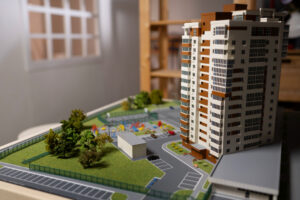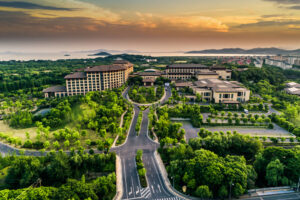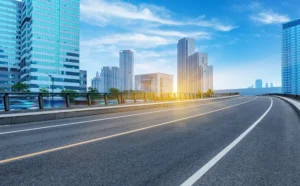
Over the past two decades, Gurgaon has undergone a phenomenal transformation from a satellite town of Delhi to a global financial and technological hub. Once known for its dusty landscapes and farmlands, the city has grown into a high-rise metropolis dotted with modern skyscrapers, IT parks, luxury residential complexes, and world-class infrastructure. But amid this evolution, one corridor stands out in shaping Gurgaon’s real estate future — the Dwarka Expressway.
Commonly referred to as the Northern Peripheral Road (NPR), the Dwarka Expressway is not just another infrastructure project. With seamless connectivity, massive infrastructure upgrades, and an influx of premium housing, the expressway is leading Gurgaon’s next phase of urban expansion.
The Evolution of Gurgaon’s Real Estate Market
From Farmland to Financial Hub
Before the 1990s, Gurgaon was mostly agricultural land with limited infrastructure. It wasn’t until liberalization and the entry of multinational companies like General Electric (GE) that Gurgaon began evolving into a business and industrial powerhouse. Soon after, developers like DLF and Unitech introduced the concept of gated townships and modern apartment complexes, sparking a housing boom.
The Cyber City Revolution
The early 2000s witnessed a tech boom, and Gurgaon quickly earned the moniker “Millennium City.” The establishment of Cyber City, Golf Course Road, and MG Road attracted professionals, businesses, and real estate investors alike. As Gurgaon’s infrastructure expanded, so did the demand for quality housing, giving rise to new micro-markets like Sohna Road, Golf Course Extension Road, and later, New Gurgaon.
Dwarka Expressway: The Beginning
What is Dwarka Expressway?
Dwarka Expressway is a 29-kilometre, 8-lane expressway connecting Dwarka in Delhi to Gurgaon’s NH-48 near Kherki Daula Toll. It runs parallel to NH-48 and offers an alternative, congestion-free route between Delhi and Gurgaon.
The project was envisioned in 2006 and opened in phases by the National Highways Authority of India (NHAI) and the Haryana Urban Development Authority (HUDA). The expressway is already impacting market forces in a significant manner, with its eventual completion anticipated by 2025.
Strategic Importance of the Expressway
Alternative to NH-48: With NH-48 congested due to heavy commercial traffic, Dwarka Expressway offers a cleaner, faster route.
Seamless Delhi-Gurgaon Connectivity: The expressway brings south-west Delhi (Dwarka, IGI Airport) closer to key sectors of Gurgaon.
Access to IGI Airport and Aerocity: Being just 15 minutes away from IGI Airport, the expressway adds enormous logistical and business value.
Upcoming Diplomatic Enclave: Similar to Chanakyapuri, the Dwarka sub-city is expected to host embassies and consulates, adding prestige and demand.
Key Residential and Commercial Projects
Premium Residential Projects
Some known developers are placing big bets on Dwarka Expressway, introducing premium and mid-segment housing schemes:
- DLF Garden City
- Sobha City
- Godrej Meridien
- M3M Capital
- Tata La Vida
- ATS Grandstand
Smart World Developers
These projects offer modern amenities like clubhouses, swimming pools, smart home features, and proximity to social infrastructure.
Affordable and Mid-Segment Projects
The Haryana government’s Affordable Housing Scheme has also prompted the launch of budget-friendly homes by developers like:
- Signature Global
- MRG World
- Pivotal Infrastructure
- ROF Group
- This inclusion makes Dwarka Expressway appealing to first-time homebuyers and middle-income families.
Commercial and Retail Developments
Alongside residential townships, several commercial and retail hubs are under development:
- Orris Market for daily convenience
- Hines-DLF Commercial Tower, in collaboration with foreign investors
- This well-balanced combination of residential, retail, and commercial real estate increases the livability and working environment.
Infrastructure Push Around the Corridor
- Wider Roads and Flyovers: Including underpasses and service lanes to ensure smooth mobility.
- Water and Sewage Systems: Improved by HUDA to support high-density housing.
- Metro Connectivity (Future Plan): Proposed extensions of the Delhi Metro’s Blue Line and Airport Express Line.
Social Infrastructure
Schools: DPS, St. Xavier’s, Mount Olympus, and more.
Hospitals: Medanta Medicity, Artemis, Manipal, and upcoming multispecialty hospitals in Sector 108–115.
Shopping Centers: New malls and retail outlets are already in planning or construction.
Government Initiatives and Policy Support
RERA and Transparency
The implementation of RERA (Real Estate Regulatory Authority) has improved trust and transparency in the market, especially in upcoming zones like Dwarka Expressway.
PMAY and Affordable Housing
Government incentives under Pradhan Mantri Awas Yojana (PMAY) have accelerated the growth of affordable housing units along the corridor.
Smart City and Master Planning
Sectors adjoining the Dwarka Expressway fall under Gurgaon’s Smart City Mission, focusing on sustainable development, digital infrastructure, and green building norms.
Benefits for Investors and Homebuyers
High Return on Investment (ROI)
Early investors in this belt have already seen capital appreciation between 25% to 40% over the past five years.
Future metro connectivity and expressway completion will further enhance property values.
Rental Yield and End-User Benefits
With the inflow of working professionals and expats, rental yields are expected to be 3-5%.
High-end residential projects are attractive for end-users looking for long-term comfort and convenience.
Challenges and Concerns
Construction Delays:
Dwarka Expressway has seen delays due to land acquisition and approvals, though most sections are nearing completion.
Environmental Impact:
High-density growth raises ecological concerns. Sufficient green spaces and drainage systems must be provided to make sustainable development possible.
Uneven Growth:
Some sectors are well-developed, while others lack basic amenities and connectivity, calling for balanced regional planning.
Gurgaon’s Real Estate Future:
Backed by strong infrastructure and policy support, Gurgaon remains a real estate hotspot, with Dwarka Expressway at its core.
New Gurgaon’s Rise:
The expressway connects to emerging sectors (81–95), paving the way for a mixed-use, integrated urban hub.
NRI & Global Investor Appeal:
Improved connectivity and long-term returns are attracting NRIs and global investors to the Dwarka Expressway corridor.
Conclusion
The saga of the real estate of Gurgaon cannot be separated from the ascendance of the Dwarka Expressway. What was once a distant infrastructure dream has now become a beacon for urban development and investment. From premium high-rises to budget homes, retail avenues to office spaces, this corridor caters to all segments.

Aayush Thakur
Hi, I’m Ayush Thakur, a Real Estate Consultant in Gurgaon with 10 years of experience. I specialize in commercial, residential, and retail properties, helping clients find the best deals with expert guidance for a smooth buying, selling, or investing process.







